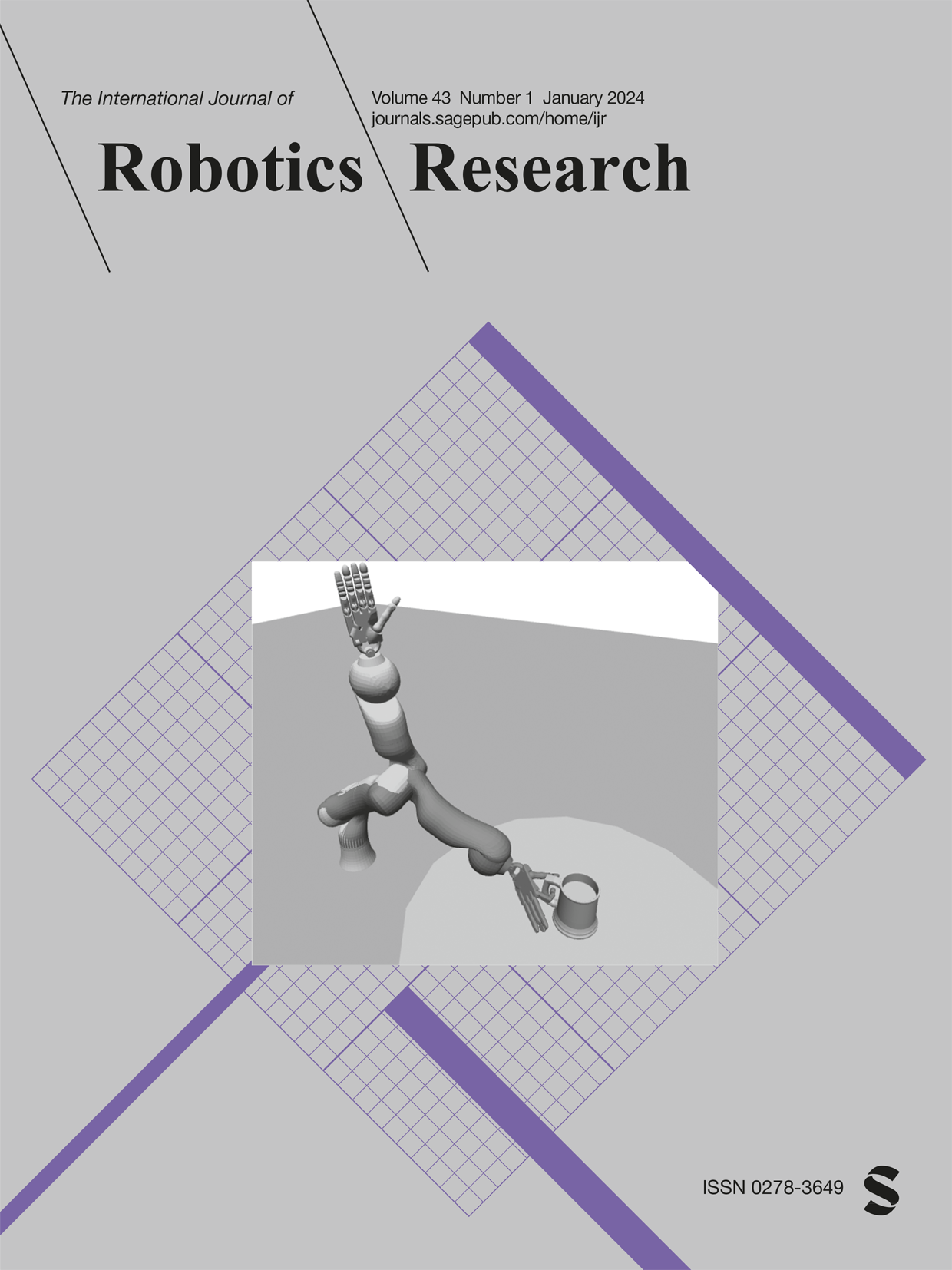通过冗余度分辨率,突破了传统同心圆管机器人曲率极限
IF 5
1区 计算机科学
Q1 ROBOTICS
引用次数: 2
摘要
了解弹性不稳定性是近年来同心管机器人研究的热点。建模的进步已经能够预测何时会发生不稳定,并产生了机器人在使用过程中的稳定性指标。在本文中,我们展示了如何使用这些度量来解决冗余以避免弹性不稳定性,为比以前可能的更高曲率设计的实际使用打开了大门。我们使用三管机器人证明了该方法的有效性,该机器人在跟随轨迹时通过冗余分辨率稳定,否则会导致弹性不稳定。我们还表明,当远程操作时,它是稳定的,否则会产生弹性不稳定。最后,我们证明了这里提出的冗余解析框架可以应用于其他对手术机器人有用的控制目标,例如在期望方向上最大化或最小化顺应性。本文章由计算机程序翻译,如有差异,请以英文原文为准。
Exceeding traditional curvature limits of concentric tube robots through redundancy resolution
Understanding elastic instability has been a recent focus of concentric tube robot research. Modeling advances have enabled prediction of when instabilities will occur and produced metrics for the stability of the robot during use. In this paper, we show how these metrics can be used to resolve redundancy to avoid elastic instability, opening the door for the practical use of higher curvature designs than have previously been possible. We demonstrate the effectiveness of the approach using a three-tube robot that is stabilized by redundancy resolution when following trajectories that would otherwise result in elastic instabilities. We also show that it is stabilized when teleoperated in ways that otherwise produce elastic instabilities. Lastly, we show that the redundancy resolution framework presented here can be applied to other control objectives useful for surgical robots, such as maximizing or minimizing compliance in desired directions.
求助全文
通过发布文献求助,成功后即可免费获取论文全文。
去求助
来源期刊
CiteScore
22.20
自引率
0.00%
发文量
34
审稿时长
6-12 weeks
期刊介绍:
The International Journal of Robotics Research (IJRR) has been a leading peer-reviewed publication in the field for over two decades. It holds the distinction of being the first scholarly journal dedicated to robotics research.
IJRR presents cutting-edge and thought-provoking original research papers, articles, and reviews that delve into groundbreaking trends, technical advancements, and theoretical developments in robotics. Renowned scholars and practitioners contribute to its content, offering their expertise and insights. This journal covers a wide range of topics, going beyond narrow technical advancements to encompass various aspects of robotics.
The primary aim of IJRR is to publish work that has lasting value for the scientific and technological advancement of the field. Only original, robust, and practical research that can serve as a foundation for further progress is considered for publication. The focus is on producing content that will remain valuable and relevant over time.
In summary, IJRR stands as a prestigious publication that drives innovation and knowledge in robotics research.

 求助内容:
求助内容: 应助结果提醒方式:
应助结果提醒方式:


